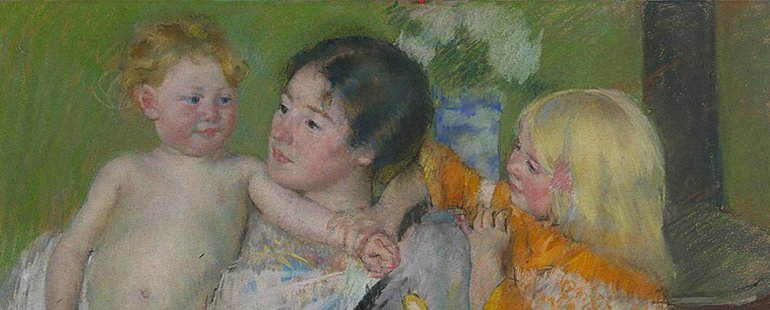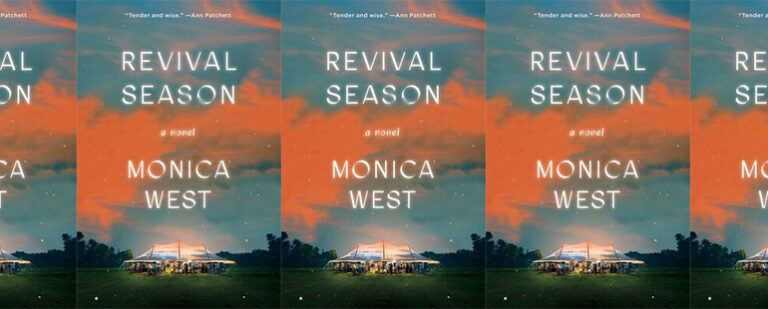Finding Community in Isolation in Ordinary Insanity: Fear and the Silent Crisis of Motherhood

Sarah Menkedick’s new book, Ordinary Insanity: Fear and the Silent Crisis of Motherhood in America is about fear, of course, and anxiety, but it’s also about community. The book, a mix of interviews, case studies, and memoir, is an examination of maternal fear and its history, causes, repercussions, and implications. In the conversations Menkedick has with new mothers, it becomes clear that the relationship between motherhood and fear is a cycle propelled by isolation and shame: shame about parenting decisions leads to isolation which leads to fear and often, then, to further isolation and shame.
Menkedick documents the historical, cultural, and systemic origins of shame, which has roots in ideologies as wide-ranging as early psychoanalysis, white supremacy, first-wave feminism, misogyny, and attachment parenting. In examining her own postpartum experience, Menkedick is frank about the ways in which becoming a mother requires mourning the death of a past self. In her case, the woman who could travel at a moment’s notice, or take risks in service of adventure or work, had to be replaced by the woman who, at the very least, made decisions with her role as a mother in mind. In my own experience, this feeling of having left not only a phase of life but an iteration of the self behind is compounded by the more literal isolation typical of early motherhood: getting together with old friends has new logistical challenges; forming meaningful relationships with other mothers is made difficult by sleep-deprivation; and somehow, despite all the discussion of breastfeeding and bodily trauma of childbirth, the prospect of judgment and shame means there is little opportunity for emotional intimacy.
Menkedick’s book itself, though, offers a sort of ad-hoc community of and for mothers. It’s not just that she lays bare her own struggles with postpartum anxiety and OCD, providing validation and affiliation, but that she is deliberate about articulating the restorative role bearing witness to other women’s stories played in her own attempts to mother from a place beyond, or at least not exclusively defined by, fear. In the book’s introduction, she writes: “I found that women’s stories—more than therapists, medicine, or other medical interventions—are central to remaking and reclaiming motherhood.” Shame thrives in darkness; shedding light on the ways in which the most fraught experiences and insecurities of motherhood are nearly-universal can help transform a phase of life with the potential to be isolating into one of powerful community building.
Menkedick uses Daphne de Marneffe’s term “Mommy Olympics,” from Maternal Desire: On Children, Love, and the Inner Life, in exploring the ways that anxiety and control are so often intertwined in the performance of contemporary American motherhood. Worrying offers the illusion of control over what is to a large degree out of our control (our children’s happiness) and parents are bombarded with data about their children from experts and with heavily edited anecdotal evidence of their children’s peers’ exceptional talents and charms through social media. Approaching motherhood as a competitive endeavor where women strive to conceal the hardest moments for a judgmental audience—whether real or imagined—not only risks making women feel more isolated but also makes it harder to ask for help without fear of condemnation.
One of the women Menkedick profiles is April, a new mother who became consumed with irrational fear whenever her daughter was out of her sight: she’d hear the microwave go on and think her mother, who was watching the baby, might be putting her inside it. At one point, April worried she would sleepwalk into the room where her daughter was sleeping and harm her; she began to sleep with ankle weights, which soon did not feel like adequate precaution against unconsciously harming her child. Eventually, with support from her doctor and anti-anxiety medication, April began to climb out of the all-consuming panic she’d felt for much of her daughter’s first year. By comparison to Samantha, another woman Menkedick profiled, however, April seems lucky. Samantha was separated from the infant she was still breastfeeding and hospitalized for weeks against her will after answering “sometimes” in response to the question do you ever have thoughts of harming yourself on a postpartum mood disorder screening at her doctor’s office. Samantha’s experience in particular reinforces the cyclical nature of shame and isolation: if there is a real risk that opening up about mental health struggles might lead to long-term separation from children, mothers are increasingly likely to keep even debilitating anxiety or depression hidden at great personal and familial expense.
Before becoming a parent, all I could imagine of maternal community was some misogynistic summoning of stereotypes: women subtly bragging about their children while complaining about their husbands and tying up the elementary school phone lines with outrage over fifth-grade graduation ceremonies. I’d have cringed at the idea of being in a group chat with the word “Mommy” in its title or belonging to (let alone posting in) a Facebook group composed only of women from my pediatrician’s practice group who had children near the same age as mine. But while it took more than a year after my oldest daughter was born before I felt steady enough to tentatively seek out real friendship with other mothers, these relationships have been among the most important of the past few years, particularly in these recent weeks of fear, anxiety, and isolation magnified far beyond the personal.
In her discussion of motherhood as a profoundly transformative event—and firm belief that it’s important to recognize it as such—Menkedick describes feeling a newfound willingness to open to the intimacy of quiet moments, even with people she already felt close to, but also with women she met only once she began actively seeking out a community of mothers. “I feel the gift in them,” she writes of these connections, “I feel my fear outlining just how precious and precarious these moments and actions are. I feel the decision to be open or closed.” Toward the end of the book, Menkedick describes a reading she gave at the Carnegie Library:
I told a number of friends and only one showed up. People had their busy lives and schedules; it was a beautiful, warm evening with buds shining on the trees. But there, in the back of the room was Sonia. She’d heard about the event, found child care, driven in from the outskirts of the city, found parking. She sat and listened to me. Afterward she waited for a minute behind a small group of people, shy, waving hello and goodbye, and I beckoned her to stay. When the room cleared out, I gave her a hug and I felt my throat tighten and burn. I said, Thank you, you didn’t have to do this. She said it was nothing. Maybe it was. But to me this connection, this storytelling, this showing up, was everything.
Menkedick’s gathering of stories was nuanced and subtle: part research, but also part intimacy through the act of bearing witness. Part of offering support for new mothers involves changing the conversation at the institutional level, but it’s easy to see through Menkedick’s writing how much change can be instituted at a much more personal and intimate level.
Though Menkedick says that becoming a mother was in some ways a loss—a loss not just of who she’d been, who but also of she’d imagined she might be—she is also clear about what she’s gained:
I believe, I hope, that on the other side of this loss is a love that I have found in connecting with other women…I have never loved women or needed them in the way I have since I became a mother. Occasionally I find myself so grateful for a woman I want to curl up in her arms and write her gushing fan letters. I have called women sobbing. I have sat with them on hot afternoons and absorbed their confessions. I have read their books and then held these books in my hand as if they were talismans, threads connecting my often-untethered life into other lives.
Like Menkedick, even before our current collective isolation my life was often untethered. In spite of the relationships I’ve tentatively opened up to, I’ve often felt that I don’t fit in with either other writers or other mothers. But, being home these past several weeks, isolated even from the conversations about elementary playdates or preschool logistics, the physical presence of my daughter’s kindergarten teacher at the classroom door, the sound of many children’s footsteps running toward the school entrance at the sound of the late bell I see in a new way that I was a part of a community that extended beyond the friends I’d become close enough to meet for dinner.
In this time of fierce anxiety, it feels more essential to find a tether, not just to other women but also to the work that women have long done for their families. In explaining the desire to bury her placenta, something she once might have found absurd, Menkedick quotes Adrienne Rich’s explanation of the etymology of mother: “The words for mother and mud (earth, slime, the matter of which the planet is composed, the dust or clay of which ‘man’ is built) are extremely close in many languages: mutter, madre, mater, material, moeder, modder.” On the night of her daughter’s third birthday, Menkedick, her husband, and daughter do bury her placenta at her parents’ farm. “Buried there is the truth of what it feels like to be so susceptible and broken-open, and also to say: I can do this. I will do this. I contain this, thirty-two miles of capillaries, a new tree of life. Mutter, madre, mater, material, moeder, modder: the mud, the material, the making at the heart of everything.” In reclaiming the work her body had done, Menkedick is also reclaiming the work women who’ve borne children for generations have done by making the taboo—the bloody, the messy—powerful and sacred.
So much of what parents are being asked to do in these days of isolation is the work that women have done for centuries: minding, schooling, sewing, cooking, gardening—and although I was a high school English teacher in the years before I had children, I’m embarrassed to say that I have spent a lot of my life declaring my ineptitude at these other skills as though it were somehow a signal of a different, better strength. The first day we stayed home, though, I ordered a beginner’s gardening set. It came with wooden sticks for labeling rows, plugs of soil, and a heat-trapping clear cover. My kids and I dropped seeds—lettuce, spinach, carrots, broccoli—into the plugs and set the tray in front of a south-facing window, just as my mom and her mom and her mom’s mom have all done for generations. It felt absurd, of course, the likelihood of any of these seeds making it into a vegetable garden outside, let alone into a salad we’d eat sometime this summer. But it also felt at the heart of everything.
This piece was originally published on April 15, 2020.


